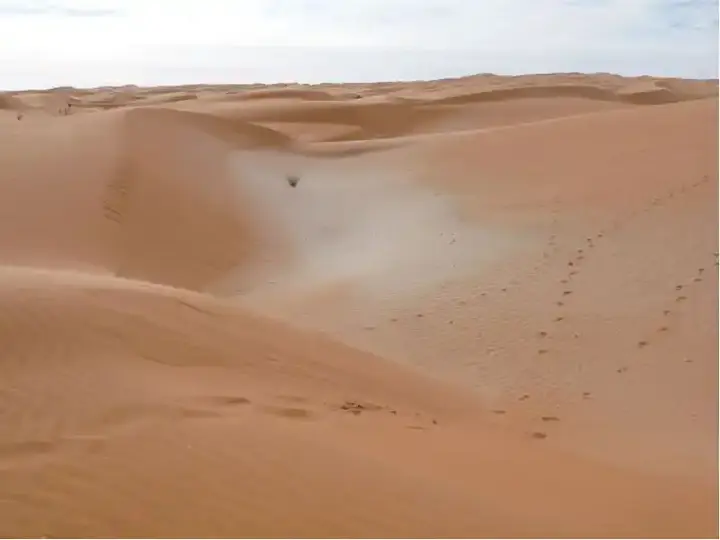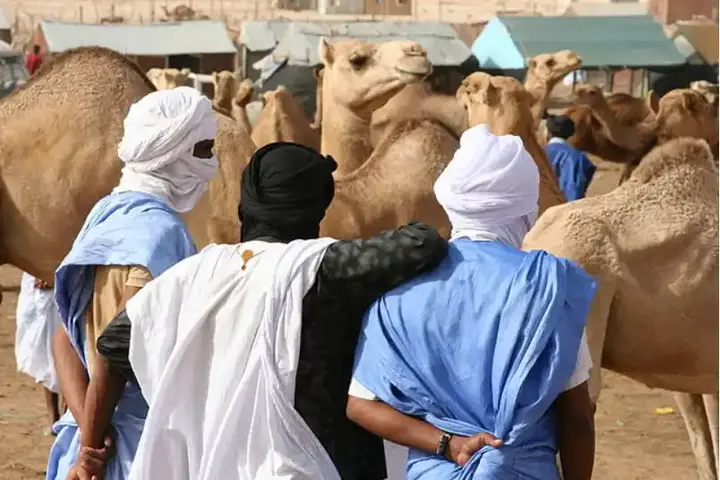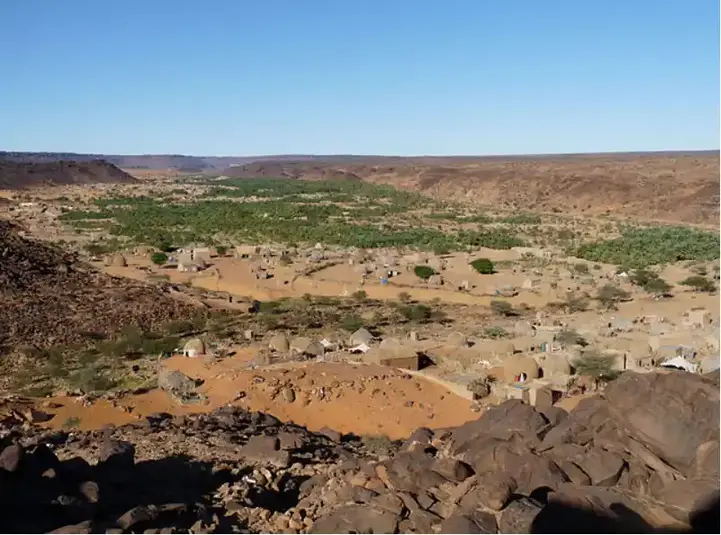Crossing the Mauritanian Desert: A Journey Through Sand and Time
The Mauritanian Sahara is one of the most spectacular and charming desert regions in the world, stretching over vast areas that touch the horizon and cover a large part of Northwest Africa. This desert brings with it a long history of challenges and adventures that travelers and Bedouins have gone through through time. Crossing the Mauritanian desert is not just a geographical journey, but a spiritual experience that transports you to a world of stillness and natural beauty, where heaven meets earth in a spectacle that amazes the eye and captivates hearts. In this article, we will review the details of crossing the Mauritanian desert, including the challenges travelers face, Bedouin life, and the routes used to navigate this vast stretch of sand.
Recommend
Show key points
- The Mauritanian Sahara is a vast and awe-inspiring desert that offers both natural beauty and a deep spiritual experience for those who traverse it.
- Crossing the desert involves facing extreme weather conditions and navigating challenging terrain, demanding great physical and mental resilience.
- Bedouins have adapted to the harsh desert lifestyle through constant mobility, sustainable living, and a strong sense of community.
- ADVERTISEMENT
- Historically, the Mauritanian desert served as a vital trade route linking East and West, facilitating economic exchange and cultural interaction.
- Traditional caravans, often guided by Bedouins, relied on desert knowledge and oases as lifelines for transporting goods across treacherous routes.
- In recent years, desert tourism has flourished, drawing adventurers seeking authentic cultural experiences and peaceful reflection away from urban life.
- The journey through the Mauritanian Sahara is more than travel—it's a powerful encounter with history, nature, and the enduring human spirit.
Challenges: How is crossing the desert a test of patience and strength?

Crossing the Mauritanian Sahara is a physical and mental challenge that requires preparation and skill. The extreme heat of the day, the bitter cold of the night, and the winds that carry the sand make the trip a test of strength and endurance. In addition, the lack of water and food is one of the main challenges faced by travelers in this harsh desert.
In the absence of paved roads, travel through the desert becomes dependent on caravans or four-wheel-drive vehicles, which roam the enormous sand dunes. It takes skills in reading the desert terrain and using the stars as a guide to navigate long nights. These conditions make crossing the Mauritanian desert a unique experience full of challenges that strengthen the spirit and test human resilience in a harsh and difficult environment.
Bedouin life: how do people live in the heart of the desert?

In the heart of the Mauritanian desert, Bedouins live a simple life based on grazing and constant movement in search of water and pasture. These residents adapt to the harsh desert environment through a lifestyle based on constant mobility and adaptation to climate change. Bedouins use camels as their primary means of transportation, as they are considered the "ship of the desert" thanks to their ability to endure long periods without water.
Bedouin life is characterized by dependence on limited natural resources and appreciation of the surrounding nature. Tents made of wool and traditional brooms are an integral part of Bedouin daily life. They also follow a cohesive social system based on cooperation and participation in daily chores. This seemingly simple life carries with it a lot of wisdom and adaptation to difficult conditions, making it a model of sustainability and living in harmony with the desert environment.
Ancient Trade Routes: The Desert as a Bridge for Trade between East and West

The Mauritanian desert has long been part of the ancient trade routes that connected North Africa, the Levant and Arabia. Merchants used caravans to transport goods such as gold, incense, spices, and salt through these arduous desert routes. These roads were an economic lifeline for many cities and towns that arose around the desert oases.
Commercial caravans were carefully organized, with Bedouins playing an important role in securing routes and guiding caravans through vast and dangerous spaces. The oases were vital stops on these routes, where merchants rested and replenished their resources before continuing the journey. This desert trade was not only an economic bridge, but also a means of transferring cultures and knowledge between different peoples, making the desert a crossroads of cultures and civilizations throughout the ages.
Desert tourism today: an adventure that attracts those looking for authenticity

Today, the Mauritanian desert has become a tourist destination that attracts adventurers and those looking for authenticity and unique experiences. Guided tours take visitors through the vast sand dunes and give them the opportunity to enjoy stunning landscapes and learn about Bedouin culture. Visitors have the opportunity to experience authentic desert life by staying in traditional camps and eating local Mauritanian food.
Desert tourism is not limited to adventure only, but also offers visitors the opportunity to meditate and relax in a quiet environment away from the noise of modern life. Tourists can take camel or SUV tours, exploring the oases, caves and historical monuments scattered throughout the desert. This experience is a unique opportunity to immerse yourself in the harsh yet beautiful nature of the desert, offering a deeper understanding of Bedouin life and rich heritage.
Crossing the Mauritanian desert is not just an adventure in the heart of harsh nature, it is a human and spiritual experience that spans time. This journey takes you deep into history, where the desert was a bridge of civilizations and a crossroads of trade and culture. The Mauritanian desert reflects the authenticity of Bedouin life and its ability to adapt to the harsh environment, and is a constant reminder of the power that man has in the face of the challenges of nature.
The desert combines difficulties and rewards, as navigating through its sands is physically and mentally challenging, but in return it gives you a unique experience full of tranquility and meditation. Bedouin life that is in harmony with this harsh environment is a testament to human resilience and ability to adapt to difficult conditions.
With the growing interest in desert tourism in Mauritania, the desert has become a place that attracts those looking for adventure and authentic experiences. The experience of crossing the desert is not just a journey through geography, it is a dive into heritage, culture and history. It gives visitors the opportunity to explore the natural world from a new angle, and learn the values of patience and resilience. This journey remains a symbol of the profound relationship between man and nature, of the human will that defies time and difficulties.








